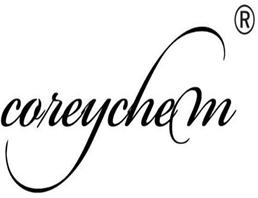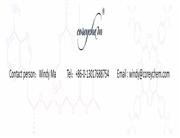1/1
Ammonium phosphate dibasic
$ 1.00
/1kg
- Min. Order1kg
- Purity99%
- Cas No7783-28-0
- Supply Ability100KG
- Update time2019-07-06

career henan chemical co
VIP8Y
 China
China
Since:2014-12-17
Address:Zhengzhou High tech Zone, Henan Province, China
Enterprise Verified
Business Bank account
Basic Contact Infomation
Business Address
Trade Company



Chemical Properties
| Product Name | Ammonium phosphate dibasic |
| CAS No | 7783-28-0 |
| EC-No | |
| Min. Order | 1kg |
| Purity | 99% |
| Supply Ability | 100KG |
| Release date | 2019/07/06 |
AD68
| Ammonium phosphate dibasic Basic information |
| Chemical properties Uses Content analysis Toxicity Usage limit Production method Hazards & Safety Information |
| Product Name: | Ammonium phosphate dibasic |
| Synonyms: | SEC-AMMONIUM HYDROGEN PHOSPHATE;SEC AMMONIUM PHOSPHATE;PHOSPHORUS ICP STANDARD;ammoniummonohydrogenorthophosphate;diammonium;diammoniumacidphosphate;diammoniummonohydrogenphosphate;diammoniumorthophosphate |
| CAS: | 7783-28-0 |
| MF: | H9N2O4P |
| MW: | 132.06 |
| EINECS: | 231-987-8 |
| Product Categories: | Industrial/Fine Chemicals;Inorganics;Water Ttreatment Chemicals;Application CRMs;ICP CRMsSpectroscopy;ICP-OES/-MS;ICPSpectroscopy;Matrix Selection;NitrateAlphabetic;P;PER - POLA;Spectroscopy;metal phosphate compound;Ammonium Salts;Materials Science;Metal and Ceramic Science;Salts;fertilizer;Food Additives |
| Mol File: | 7783-28-0.mol |
 |
|
| Ammonium phosphate dibasic Chemical Properties |
| Melting point | 155 °C (dec.)(lit.) |
| density | 1.203 g/mL at 25 °C |
| RTECS | TB9385000 |
| storage temp. | Store at RT. |
| solubility | H2O: 1 M at 20 °C, clear, colorless |
| form | Powder |
| color | White |
| PH | 7.6-8.2 (100g/l, H2O, 20℃) |
| Water Solubility | 58 g/ 100mL (10 ºC) |
| Merck | 14,542 |
| Stability: | Stable. Incompatible with strong acids, strong bases, strong oxidizing agents. |
| InChIKey | MNNHAPBLZZVQHP-UHFFFAOYSA-N |
| CAS DataBase Reference | 7783-28-0(CAS DataBase Reference) |
| Safety Information |
| Hazard Codes | Xi,Xn,N |
| Risk Statements | 36/37/38-20/21/22-50 |
| Safety Statements | 26-36-61-37/39 |
| RIDADR | UN 3465 6.1 / PGIII |
| WGK Germany | 1 |
| F | 3 |
| TSCA | Yes |
| HS Code | 31053000 |
| Hazardous Substances Data | 7783-28-0(Hazardous Substances Data) |
| MSDS Information |
| Provider | Language |
|---|---|
| Ammonium hydrogen phosphate | English |
| SigmaAldrich | English |
| ACROS | English |
| ALFA | English |
| Ammonium phosphate dibasic Usage And Synthesis |
| Chemical properties | It appears as colorless transparent monoclinic crystal or white powder, being soluble in water, insoluble in alcohol, acetone and ammonia. |
| Uses | (1) Diammonium phosphate is industrially used as feed additives, flame retardants and the ingredients of the fire extinguishing agent. (2) It can be used as analysis reagents and buffer (3) It is a widely applicable efficient fertilizer for vegetables, fruits, rice and wheat. (4) It can be used as water softeners; yeast foodstuffs, and so on. (5) In the food industry, it can be used as food leavening agent, dough regulator, yeast food, brewing fermentation additives as well as being used as a buffer. (6) It can be used as ruminant feed additives. (7) It can be used for printing plate, medicine, fire prevention, electronic tubes. (8) Fertilizer level is mainly used for high concentrations nitrogen and phosphorus compound fertilizer. The industrial grade can be used for impregnation of wood and fabric to increase its durability; it can be used as dry powder fire extinguishing agent, fluorescent phosphor; also used for the manufacturing of printing plate, tube, ceramic and china, wastewater biochemical treatment; military use it as the flame retardants of rocket engine motor insulation materials. |
| Content analysis | Accurately weigh about 600 g to dissolve in 40 ml of water with 0.1mol/L sulfuric acid titration to pH value of 4.6. Each mL of 0.1 mol/L sulfuric acid corresponds to 13.21 mg of diammonium hydrogen phosphate [(NH4) 2HPO4]. |
| Toxicity | ADI 0 to 70 mg/kg (calculated as phosphorus, FAO/WHO, 1985). It is generally recognized as being safe (US Food and Drug Administration, 1985). ADI 0 to 70 mg/kg (total phosphate amount as calculated by phosphorus, FA0/WHO, 2001); GRAS: (FDA, § 184.1141b, 2000). |
| Usage limit | GB 2760-96: meat products, l g/kg; fruit and vegetable peeling, GMP. US BATF (27CFR §240.1051,2000): in the wine production, it is used as yeast nutrients, 0.17%; sparkling wine products in the content of ≤ 0.8%. GB 2760-96 provides it as allowable food processing aids; take GMP as limited. |
| Production method | (1) The production of diammonium phosphate by the reaction of hot phosphoric acid and liquid ammonia or extraction of phosphoric acid and liquid ammonia is the major method of industrial production. The former has high purity and the process is simple. The latter utilizes wet extraction of phosphoric acid with low cost. In the hot phosphoric acid neutralization liquid ammonium method (water: phosphoric acid = 1.3: 1) into dilute phosphoric acid. After metering, it is added into the enamel reaction tank with stirring and jacket. Under stirring, the ammonia gas is passed through the round tube ammonium distributor for neutralization reaction. Upon being neutralized until the reaction liquid Ph is between 8 and 9, filtered when it is hot, and then sent to the cooling crystallizer. After cooling and crystallization, the mother liquor is separated by centrifugation and then dried to obtain diammonium phosphate products. Its reaction equation: H3PO4 + 2NH3 → (NH4) 2HPO4 The centrifuge separated mother liquor is sent into the separator for addition of ammonium sulfide in order to remove the iron. After filtering, the filtrate is concentrated, sent to the fine tuning tank, pass ammonia fine for tuning Ph to 8~9 and return to the cooling mold. Phosphoric acid extraction and liquid ammonia neutralization method: adding a certain amount of hydrogen peroxide to oxidize the ferrous iron in the phosphoric acid solution. Send the phosphoric acid into the tubular reactor for neutralization with ammonia with the second reaction to making Ph of about 8.0. After the filtering by the frame filter, the filtrate is sent into the fine tuning tank to adjust Ph to 7.8~8 and sent into the evaporator to reach a relative density of 1.3, return back into the cooling mold. The cooled crystallization liquid further undergoes centrifugal separation and drying to obtain the finished product of diammonium hydrogen phosphate. Its reaction is: H3PO4 + 2NH3 → (NH4) 2HPO4 The filtered residue is rinsed with water, and the lotion and the mother liquor are combined and sent to the storage tank of reaction liquid for acid regulation with the impurity being removed by filtration and recycled. The washed residue, after drying, contains 35% phosphorus pentoxide and 5% ammonia, being a high-efficacy compound fertilizer. (2) For the production of feed-purpose diammonium phosphate using wet phosphate as raw material, the production process demands a two-step defluorination, three-step amination and thermal decomposition with triammonium phosphate for obtaining the feed-purpose diammonium phosphate. Its production cost is lower than the method using yellow phosphorus as raw material. Wet phosphoric acid method: send the extracted phosphate acid containing 20%~30% P2O5, 1.2%~2% F into the reaction device through the gas purification system, after three-step amination for make impurities form a precipitate that is easily removed by filtering. The precipitate is further separated through the filter press. The filtrate is a diammonium phosphate solution containing P2O5 <15%, F0.4%, SO42-2.5%~3% and about 1% of solid suspension. In order to further remove the dissolved impurities and part of the solid suspension, the filtrate is sent to another reaction device for sending ammonia to saturation, and then put into the cooling crystallization device for cooling crystallization, leading to the formation of triammonium phosphate crystals. The crystal is separated from the mother liquor through a conical settling tank, and then is dehydrated by centrifugation, and the crystal is put into a boiling furnace and pyrolyzed into diammonium hydrogen phosphate, and dried to obtain diammonium phosphate dihydrate product for feed, the reaction equation is as follows: H3PO4 + 2NH3 → (NH4) 2HPO4 (NH4) 2HPO4 + NH4OH → (NH) 43PO4 + H2O (NH4) 3HPO4? 3H2O [70C]. (NH4) 2HPO4 + NH3 + 3H2O The gas mixture containing ammonium dihydrogen phosphate dust and ammonia gas is subjecting to dust removal through cyclone separator, and then subject to wet phosphoric acid spray absorption in the scrubber. (3) To the ammonium dihydrogen phosphate solution, slowly add concentrated ammonia to neutralize the reaction until pH 14 to obtain the triammonium phosphate solution, and then subject to cooling, crystallization, centrifugal separation and drying to obtain the final product. |
| Hazards & Safety Information | Category Toxic substances Toxic classification poisoning Acute toxicity Reference: Oral-Rat LD50: 17000 mg/kg; Abdominal-rat LDL0: 1000 mg/kg Flammability and Hazardous properties upon heating, it can produce toxic nitrogen oxides, phosphorous oxides, and ammonia fumes Storage and transportation characteristics warehouse: Ventilated, Low temperature and dry Fire extinguishing agent dry powder, foam, sand, carbon dioxide, mist water |
| Chemical Properties | white crystalline powder |
| Definition | ChEBI: An inorganic phosphate, being the diammonium salt of phosphoric acid. |
| Uses | Fireproofing textiles, paper, wood, and vegetable fibers; impregnating lamp wicks; preventing afterglow in matches; flux for soldering tin, copper, brass, and zinc; purifying sugar; in yeast cultures; in dentifrices; in corrosion inhibitors; in fertilizers. |
| Contact allergens | A flame retardant caused contact dermatitis in surgical personnel. It was due to excessive residual concentrations in surgical garbs. |
| Safety Profile | Low to moderate toxicity. See also PHOSPHATES. When heated to decomposition it emits very toxic fumes of POx, NOx, and NH3. |
| Purification Methods | Crystallise it from water (1mL/g) between 70o and 0o. Its solubility in H2O is 59% at room temperature and 200% at the boiling point. It slowly evolves NH3 and should be stored in a well-stoppered container. After one crystallisation, ACS grade salt had Fe, Mo, Na, Se and Ti at 1, 0.2, 1.4, 0.2 and 0.8ppm, respectively. [Gmelin’s, Ammonium (8th edn) 23 pp422-426 1936.] |
Company Profile Introduction
Established in 2014,Career Henan Chemical Co. is a manufacturerspecializing in the sale of fine chemicals. Mainly deals in the sales of: Pharmaceutical intermediates OLED intermediates: Pharmaceutical intermediates; OLED intermediates;



